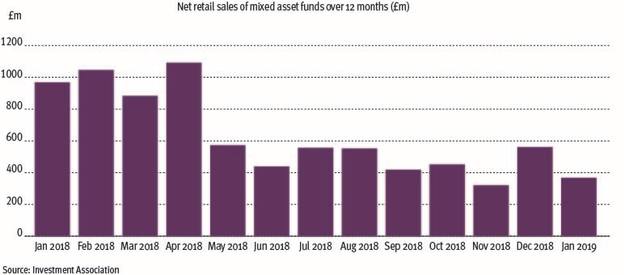

Multi-asset investment is a popular choice for advisers looking for a diversified portfolio to suit their clients’ return objectives and risk profiles.
There are two main avenues for advisers to access multi-asset portfolios: through investing directly in a multi-asset collective investment fund, or by choosing a managed portfolio service.
While either offering could provide exposure to very similar assets and investments, each also has certain characteristics that could provide advantages or disadvantages, depending on the investor’s particular requirements.
Reporting
Reporting has been a powerful driver of the rapid expansion of managed portfolio services over the past few years.
Improvements in technology have increased efficiencies in terms of both trading and asset management (outside a fund structure), resulting in clients being able to view a full list of holdings and transactions.
Clients can therefore track and account for every penny, and access to this level of information has been a very important reason behind the increase in demand for managed portfolio services.

Meanwhile, through a fund structure, while clients can see the number of units purchased, limited additional information is available beyond the usual fund factsheet.
Although technology can allow ‘look-through’ information to be extracted, this is still not available through many authorised corporate directors or platforms. Look-through effectively provides the line-by-line reporting for multi-asset funds that is already widely provided for a managed portfolio service.
Availability and efficiency
Multi-asset funds can be bought direct through the authorised corporate director and on a wide range of platforms, which probably gives funds the edge over managed portfolio services, as some platforms are still unable to host managed portfolio service solutions.
Also, from an efficiency point of view, the fund approach has advantages, given that it can be managed in one location, whereas a managed portfolio service must be loaded onto each platform individually.
Cost and asset selection
Services run by discretionary fund managers normally attract VAT on their management fees, while multi-asset funds are not subject to VAT. It is worth pointing out, however, that funds are subject to other additional charges, such as ACD and ancillary costs.
Considering asset selection, investors in funds have a wider choice of investments, and are not limited simply to those available on a platform.
Customisation
One area where multi-asset funds are unlikely to be able to match their managed portfolio service counterparts is in terms of customisation.
It takes a considerable amount of time and cost to set up a fund, whereas a managed portfolio service can be set up relatively quickly and cost-effectively.
This enables managed portfolio services to be quickly customised to meet the needs of the professional adviser market whose clients have specific objectives. Bespoke fund management is another route available for individual clients, typically those with larger investable sums.
This is where a professional adviser can help: they can use their product knowledge and experience to help an investor identify the most suitable investment option amid the substantial universe of multi-asset funds and model portfolio services available.
Capital gains tax and income payments
The main difference here is around capital gains tax.
A fund-based solution will roll up any CGT liability until assets are sold, whereas a managed portfolio service will use an individual’s allowance on an ongoing basis.
A managed portfolio service will allow investors to take fixed monthly income payments or the natural yield, whereas a fund solution will only allow natural yield to be paid out, unless the investor sells units.
Service and regulation
Buying a fund has often been a way for advisers to retain control of the fund picking, while ultimately outsourcing the day-to-day investment responsibilities.
With a managed portfolio service offered by a DFM, advisers can often service the needs of a broader range of clients, because DFMs can typically offer more investment solutions (such as alternative investment, responsible investment and bespoke investment) than are available through advisers using fund-based solutions.
A professional adviser plays a key role in determining which option is most suitable for an individual investor and in finding a suitable service provider, be that the manager of a multi-asset fund, or a managed portfolio service.
As discussed above, depending on the investor’s portfolio size, reporting preferences and tax situation, one option may be more practical than the other.
Ultimately, it comes down to investor preference, and both options can play a part in helping clients meet their end objectives, particularly as clients’ investment requirements and circumstances change over their lifetimes.
As a DFM, it is up to us to offer both service options to advisers to allow them to make the best choice on behalf of their clients.
Jonathan Webster-Smith is head of multi-asset investing at Brooks Macdonald



